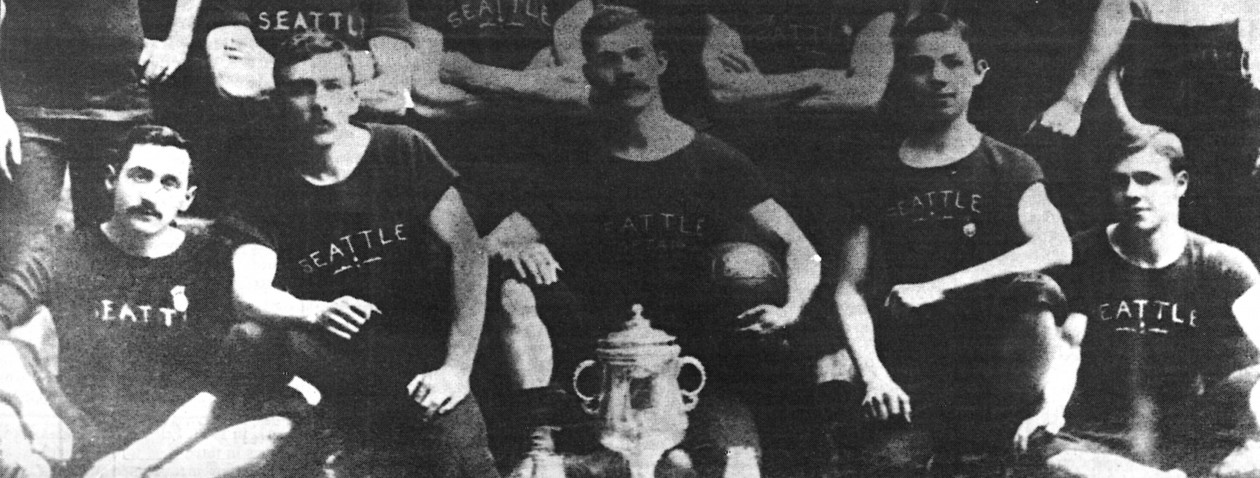Note: This was first published by The Seattle Times on October 27, 2002.
Are you ready for some futbol ?
We’re talking shin guards and shorts. We’re talking the world’s game, played by the best athletes around and at the highest possible level. We’re talking about a steady diet of big-time soccer for the local community, not only next week but for years to come.
Last spring’s stopover by the U.S. World Cup team and the women’s Gold Cup next weekend represent a beginning. But Seattle and its surrounding soccer community deserve the best, and more of it. Now it’s time we demand it.
Top-class soccer is what’s been missing in this city for 20 years, and I dearly want it to return. I’m not alone, either.
There are 275,000 players and thousands more aficionados among you. There is a publicly funded soccer/football stadium open for business. And Major League Soccer once promised that if such a stadium were built, it would come.
Seattle has botched its fair share of opportunities to bring back big-time soccer, and we cannot afford to let it happen again.
Ten days ago, MLS Commissioner Don Garber announced that the first-division league would swim against the economic tide and expand beyond its current 10-team format. He said Seattle was on the short list.
Earlier this week, the local A-League (second division) club, the Sounders, announced it will play at Seahawks Stadium in 2003. It’s a financially risky move but one that should be applauded. Still, the die figures to be cast on the MLS decision well before next season.
Say whatever you like about the MLS, but don’t dismiss it. MLS players formed the nucleus of a wildly successful run through the World Cup. The MLS is financed by heavyweights such as Lamar Hunt (Kansas City Chiefs), Philip Anschutz (L.A. Kings and Staples Center) and Robert Kraft (New England Patriots). And it will be the MLS that opens the door to further opportunities, from World Cup qualifiers (rather than exhibitions) to a women’s pro franchise.
With all due respect to Atlanta, Cleveland, Houston, Minneapolis-St. Paul, Oklahoma City, Tulsa and Philadelphia, the other cities under consideration by MLS, none can compare to Seattle in terms of past support. However, other areas could hold the edge elsewhere, be it a grass pitch, proximity to existing teams or a larger TV market. More important, some, like Tulsa, are hungrier, and others likely have hotter prospects for investors.
Let’s face it, Seattleites rarely display enthusiasm for the business side of sports or inviting new ventures to town. We used the court system to get the Mariners.
Instead, we save our passion for when the athletes step between the white lines. Soccer fans could be the exception, however.
Eight years ago they responded to the first MLS call to arms by pledging more than 1,300 season tickets to a league that, at the time, was only an idea. In March, 38,000 fans watched the U.S. men demolish the Honduras B team on a makeshift stage at Safeco Field. Already, 15,000 seats have been sold for the upcoming Gold Cup, with 30,000 expected for each of the two dates (Nov. 2 and Nov. 6).
To me, those numbers translate to a passion for the sport, and in the coming weeks and months the soccer community must tap into that if we are to emerge from our second-city status.
The fans cannot be blamed for failures of the past. Seattle supported the original Sounders to the tune of an average attendance of 18,000-24,000 from 1974 to ’82. When the Sounders and NASL folded, we backed Cliff McCrath and Jimmy Gabriel’s notion of a semipro team, FC Seattle, composed primarily of Americans. Likewise, when Alan Hinton resurrected the Sounders in 1994, the crowds returned to Memorial Stadium. If the MLS had not siphoned off the team’s top players and if the team played in a proper facility, those crowds would likely be there today.
The problem has never been the fans. They didn’t botch the bid for World Cup games in 1994 and ’99, nor fail in the pursuit of an MLS charter team. That blame lies with community leaders who lacked vision of how big the World Cup would become — and that Seahawks Stadium did not exist for MLS.
To succeed this time around and beat out the likes of Oklahoma City, the local soccer community needs to become vocal.
Start by sending a quick e-mail to MLS Commissioner Don Garber at mlsgarber@mlsnet.com .
Tell him that Seattle/Tacoma regularly ranks among the top five TV markets in World Cup viewership. Tell him that FieldTurf wasn’t your idea for Seahawks Stadium, but that FieldTurf is still better than the cleat-torn sod riddled with football markings at Giants Stadium.
Tell Garber and any potential (and preferably local) owner that you’ve paid $50 for a faraway Safeco seat to watch the U.S. national team, and that $18 to watch an MLS game seems reasonable. Remind the prospective buyer that $20 million buys an entire team, not just an American League shortstop. Tell them that you voted to pay for a stadium (Seahawks, not Safeco) that would be home to first-class soccer. The soccer community of Greater Seattle has done its part, with its voices, its wallets and its votes. Now we must do a little bit more because, well, consider the alternative: moving to Oklahoma City.
